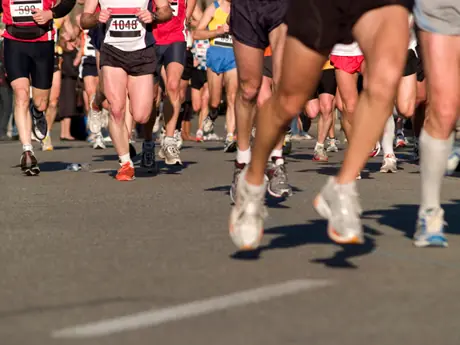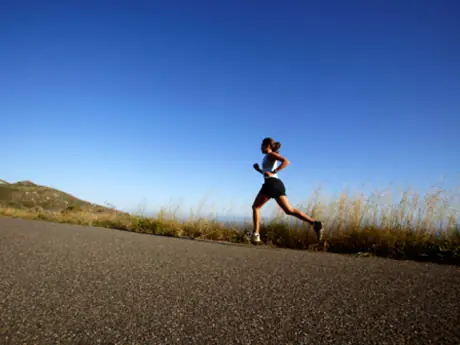9. Cross-Training Provides Active Rest and Recovery
Running is hard on the body, although claims that it creates impact forces up to seven to eight times body weight are exaggerated, according to the experts I consulted. But they acknowledge the forces can reach two to three times body weight with each stride, and even more on downhills. It's no surprise that our muscles, joints, and connective tissues get weary from all this shock-absorbing. So experts agree that most runners benefit from at least one nonrunning day a week, and that injury-prone runners should avoid consecutive days of running. Cross-training offers a great alternative.
Action Plan
Use cross-training activities to supplement your running, improve your muscle balance and keep you injury-free. Swimming, cycling, elliptical training and rowing will burn a lot of calories and improve your aerobic fitness, but be careful not to aggravate injury-prone areas.
10. Get Shoes That Fit
Running shoes have changed a lot over the years. They breathe better, are more likely to come in various widths and are constructed from superior materials. Most important, there are far more shoes to choose from (racing, training, track, cross-country). There are even minimalist shoes designed to mimic barefoot running (although there's no scientific evidence that forgoing shoes decreases injury risk). This gives you more options. Of course, you still have to figure out which shoe will work best for you--not an easy task. "There's no single best shoe for every runner," says J. D. Denton, who has owned a Fleet Feet running store in Davis, California, for 14 years. Not only that, but it's impossible to say that shoe ABC will eliminate injury XYZ. Denton and his staff are careful to draw a line between giving medical advice and suggesting a top-notch shoe. "We're careful not to say, 'This shoe will cure your plantar fasciitis,'" Denton says. "Shoes aren't designed to cure injuries. Our goal is to make sure you get the shoe that fits and functions best on your feet."
Others are less cautious than Denton. They point out that while a given shoe isn't guaranteed to heal a given injury, the right shoe on the right runner can help. Verran says that he has been able to help patients overcome injuries by suggesting a better fit. "It happens all the time," Verran says. "It's a matter of finding the shoe that's right for a certain foot type."
- 5
- of
- 5
Get ACTIVE on the Go


Couch to 5K®
The best way to get new runners off the couch and across the finish line of their first 5K.
Available for iOS | Android







Discuss This Article